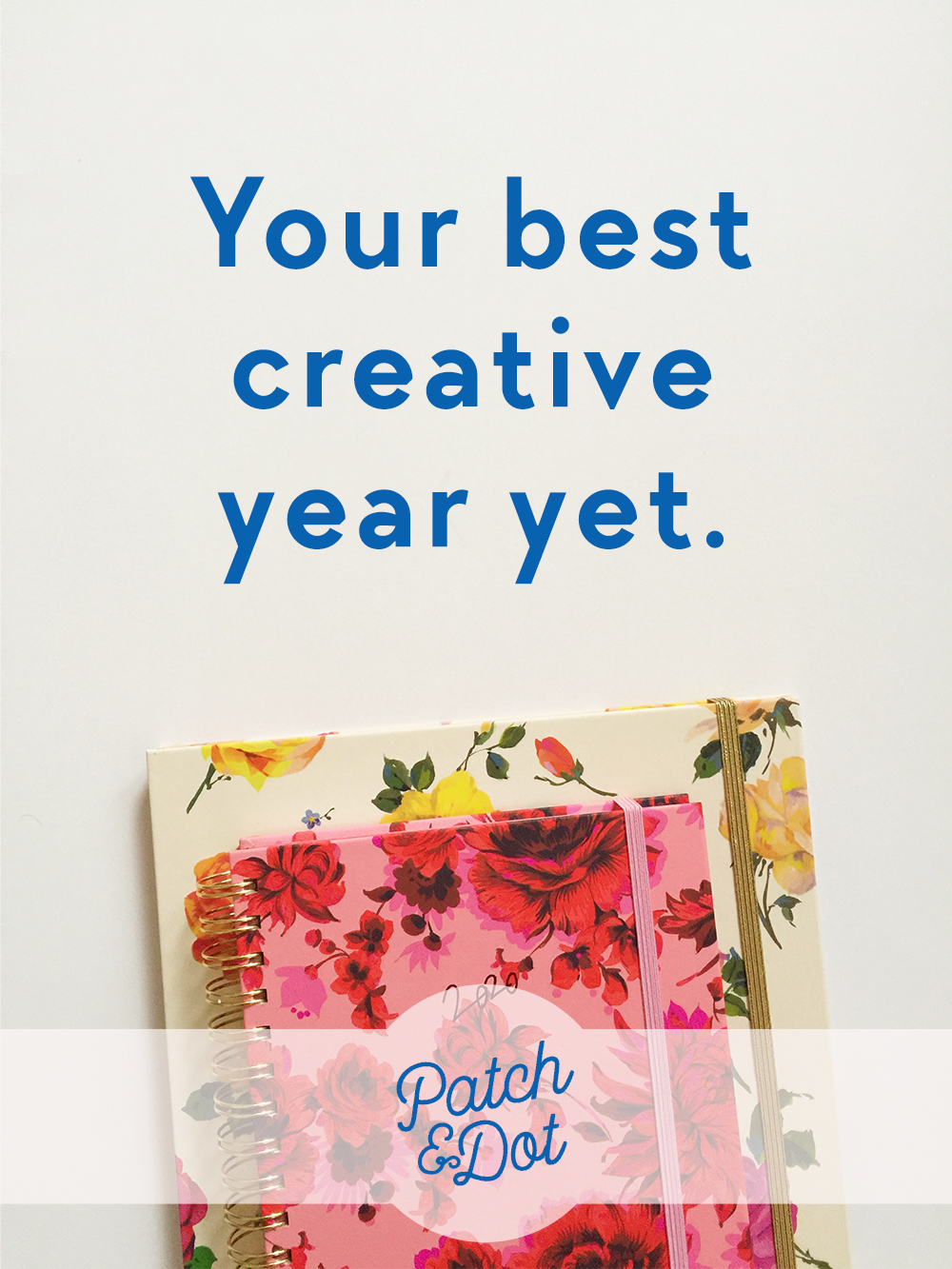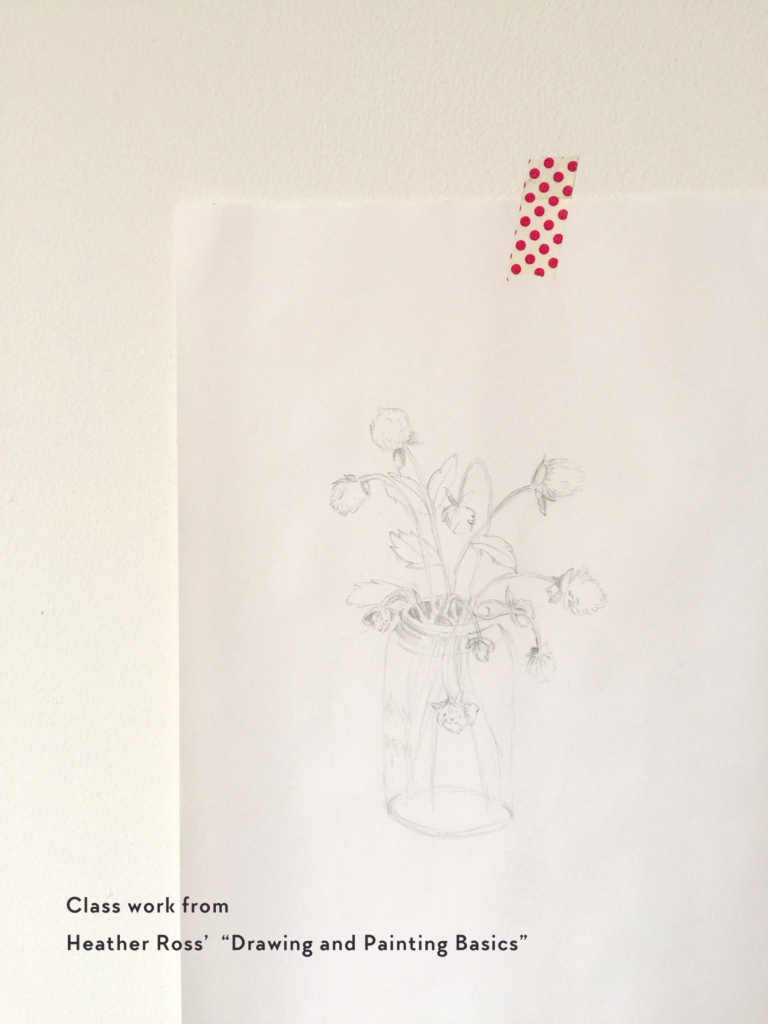There’s nothing better than the start of a new year. It feels like a blank slate creatively, and I cannot overstate how much I relish the down time after the holiday bustle is over, because it’s the perfect time to daydream about new projects. The past few years I’ve gotten really clear about how I want to spend my time, and I credit it in part to giving myself this space to think big and plan it all out.
So I thought I’d share. Here’s how I’m setting myself up to have a productive and fun year creatively in 2020.
The right tools
Every year I treat myself to a Ban.do planner, and 2020 is no different. I love the way their planners are organized, with sections to see your entire month at a glance, and then weekly sections with ample space to track daily to-do lists. (Oh and there’s cute stickers too.) This year I went a step further and got a Ban.do file folder. It’s color-coded and comes with tons of labels – I’ll use mine to organize ideas, inspiration, and receipts (because after many years of plugging away at this, some of my creative stuff has started to earn money, wahoo!)
Unstoppable output
Having a vision is great, but it means nothing if it’s not followed up by action. Being unproductive is a real bummer for me, and the only way to learn new skills and improve your craft is by doing, so I set myself so that I cannot help but create things over the course of the year. I do this in two ways: deadlines and classes. Life will get in the way sometimes, for sure, but if you constantly engage in fun projects, some of them will definitely bear fruit eventually.
The deadlines (using quilting as an example) usually take the form of quilt alongs, challenges (like the Pantone Color of the Year quilt challenge), or daily practice with some kind of constraint (like the #100daychallenge, where you choose one specific output – say, gouache illustrations of fruit, or paper piecing every day – and do it once a day for 100 days).
For the classes/learning aspect, this year I’ve created a program of self-directed study, tailored specifically to my creative goals, using free or very affordable online classes, which leads me to …
Choosing a focus
This one is a real challenge for me. As a creative type, I am often all over the place, chasing the shiny objects of endless new ideas and projects. Over the years I’ve learned not to fight it so much, to embrace the desire to try new things and explore new mediums, and rather set myself up for success through the magic of organization and focus.
With this in mind I’ve channeled my interests into a learning plan that will both satisfy my need to be able to dip into different areas as the whim strikes, while at the same time narrowing my focus just enough that, even if I jump around a bit, by the end of the year I’ll have built up some experience in some specific areas.
All of the courses I plan to take fall into one of three categories:
- Quilting – this is why most of you are here I think, and if you’re like me, you’ve got the basics down, but there’s always some specialized area you’d like to wrap your head around/get more proficient at. For me, I want to get into hand quilting more. In the past I’d been really intimidated by applique and English Paper Piecing (EPP), but after trying a few projects over the past couple of years (Carolyn Friedlander patterns and the Kingfisher sew along respectively), I’m hooked. And now I just want to get better at it.
- Illustration – One of the things I love best about taking this type of class is that the instructors typically share exactly what tools (brushes, pens, paints, paper) they use, which for me is one of the biggest stumbling blocks to getting started. It’s great to be able to walk into an art supply store with a specific list in hand (instead of staring at a wall of supplies, completely mystified, which is my default mode).
- Surface Design/Pattern Design – We’ve all daydreamed about designing our own fabric, right? After completing my illustration unit I think it would be fun to learn the ins and outs of how to get those designs digitized and onto fabrics, notebooks, stationery etc. (If nothing else you can print your own designs on Spoonflower!)
You’ll notice that the courses I’m taking are spread across three platforms: Skillshare, Creativebug, and Bluprint (formerly Craftsy). But, even if you only belong to one of these, their offerings are so rich you can build a really worthwhile learning program of your own on a single platform. You might start with a couple that catch your eye among the classes below, then add more to suit your own crafty goals.
(And here’s a pro-tip: the links in my course list take you to individual classes. If you decide to sign up, be sure to use one of the three links below for the biggest possible discount. Most of these also include free trials – you can cram a lot of learning into a month when you’ve got that ‘new year’ motivation!)
Creative Bug – 50% off for life
Bluprint – unlimited access for less than $4/Month
Skillshare – two free months of Skillshare Premium
Now to the classes.
Quilting
Big Stitch Hand Quilting by Tara Faughnan
Whole Cloth Quilt by Anna Maria Horner
Hand-Stitched Appliqué Quilts by Carolyn Friedlander
English Paper Piecing: Beyond the Basics by Helen Stubbings
Illustration
Drawing and Illustration Basics by Heather Ross – This one I’ve already completed. It’s great because the objects you draw are things you already have around your own house.
Getting to Know Your Paint: Watercolor, Gouache, and Acryla Gouache by Dylan Mierzwinski
Digitizing Your Paint: Selecting and Adjusting Artwork in Photoshop by Dylan Mierzwinski
Illustrating Flowers & Arranging Bouquets in Photoshop by Dylan Mierzwinski
Illustrator Basics: The Pen & Pencil Tools by Dylan Mierzwinski
Surface Design/Pattern Design
Introduction to Designing Repeat Patterns in Illustrator by Elizabeth Olwen
Pattern Design: Bring Your Artwork to Life on Products by Elizabeth Olwen
Pattern Design II: A Creative Look at a Full Pattern Collection by Elizabeth Olwen
How to Design Fabric by Denyse Schmidt, Heather Ross and Lizzy House – This is a five-part series that I’ve actually already taken before. It’s so good I’m doing it again!



